Can Diet Soda Destroy Your Gallbladder
How do I recognize the Symptoms of a Gallbladder Attack?
A gallbladder attack can be a very painful, potentially dangerous medical condition. This article will help you understand the signs and symptoms of gallbladder attack and how it can be treated.
What is the gallbladder?
The gallbladder (gall bladder) is a sac that sits in the right upper abdomen, just below the liver, and stores bile (gall) produced by the liver. Bile is made up of water, cholesterol, bile salts, fats, proteins and bilirubin (a yellowish-brown pigment). If the liquid bile contains too much cholesterol or bilirubin, it can harden into gallstones.
Most people with gallstones don't even know that they have them. In some cases, a gallstone may cause the gallbladder to become inflamed, causing pain, infection, or other serious complications.
Gallbladder Issues–What exactly are they?
When abdominal pain occurs, gallbladder problems are at the top of the list of possible causes for the pain.
Gallbladder Attack
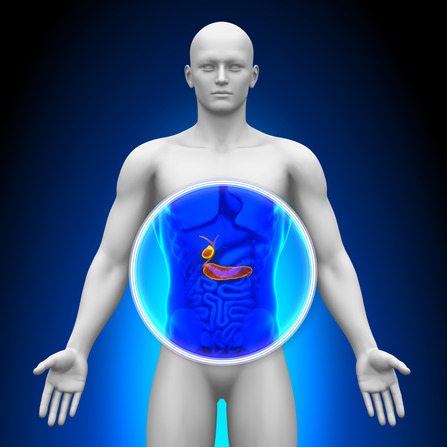 A gallbladder attack is a term commonly used to describe a gallstone blockage event.
A gallbladder attack is a term commonly used to describe a gallstone blockage event.
In a normal person, bile acids and proteins prevent the formation of gallstones. But when there's an imbalance in the bile components, pebble-like deposits known as gallstones are formed in the gallbladder. As gallstones block the bile ducts, pressure increases in the gallbladder. This can cause an "attack" of sporadic pain in the center of the upper abdomen called biliary colic. This belly pain will radiate outwards, moving gradually to the center of the belly or upper back.
A gallbladder attack or gallstone blockage can last anywhere from 15 minutes to a few hours. Gallstones are often managed by waiting for them to be naturally passed.
Common signs and symptoms of a gallbladder attack
- Gallbladder pain. Pain in the upper right side or middle of the abdomen. The pain can be dull, sharp, or cramping. The pain usually starts suddenly. Feeling of pain is steady and may spread to the back or the area below the right shoulder blade. Having steady pain particularly after meals is a common symptom of gallbladder stones
- Nausea. Nausea or vomiting are common symptoms of all types of gallbladder problems
- Jaundice. Yellow-tinted skin may be a sign of a common bile duct block from a gallstone
Risk Factors for Gallstones
Numerous factors contribute to your risk of gallstones. Risk factors can include:
- being overweight or obese
- eating a high-fat or high-cholesterol diet
- having diabetes
- having a family history of gallstones
- being age 60 or older
- taking medications that contain estrogen
- being a woman
Gallbladder Infection
A gallbladder infection most commonly occurs due to gallstone obstruction of one of the ducts that moves bile from the gallbladder to the intestine. Bacteria in the bile may lead to gallbladder gangrene, rupture, abscess, or a bloodstream infection.
Signs and Symptoms of Gallbladder Infection
Recognizing symptoms that may indicate a gallbladder infection is important, as this condition requires urgent medical treatment.
- Fever. Fever is a characteristic symptom of gallbladder infection. Fever generally does not occur with a typical gallbladder attack, the presence of fever is an important distinguishing characteristic that points to an infection. A sudden temperature spike in someone with gallbladder-related symptoms could indicate the development of gallbladder gangrene or rupture, or the development of a bloodstream infection.
- Gallbladder Pain. Gallbladder infection almost always causes severe pain, which usually begins in the right or middle upper abdomen. Over time, the pain increases in intensity and becomes more generalized, a characteristic that helps distinguish a gallbladder infection from a gallbladder attack. Gallbladder pain that lasts more than 6 hours points to the possibility of a gallbladder infection.
- Gastrointestinal Disturbances. Abdominal distension due to decreased intestinal activity in response to a gallbladder infection or inflammation may also occur.
- Heart Palpitations, Rapid Breathing and Confusion. A racing heartbeat, rapid breathing and confusion are typical symptoms of shock, which may develop if a gallbladder infection spreads to the bloodstream.
Gallbladder Disease
Cholecystitis is the most common type of gallbladder disease. A common sign of Cholecystitis may be either an acute or chronic inflammation.
Acute cholecystitis is generally caused by gallstones, but may also be the result of tumors or various other illnesses. Acute cholecystitis will present with pain in the upper right side or upper middle part of the abdomen. The pain can come right after a meal and range from sharp pangs to dull aches that may often radiate to the right shoulder. Additional symptoms of acute cholecystitis include: fever nausea, vomiting, jaundice, and different colored stools.
Cholecystitis is considered chronic after several attacks of acute cholecystitis, the gallbladder will begin to shrink and lose its function of storing and releasing bile. Abdominal pain, nausea, and vomiting may follow.
Test Used To Evaluate for Gallbladder Disease
- Blood Tests – A blood test may also be performed to help diagnose gallbladder disease. A complete blood count, or CBC, can help confirm an infection if there is a high white blood cell count. Other specific blood tests can also reveal high bilirubin levels (the cause of jaundice, a complication of gallbladder problems) or elevated enzymes suggesting an obstruction in the gallbladder.
- Urine Tests – Urine tests may also be performed to help diagnose problems with the gallbladder by looking for abnormal levels of chemicals like amylase, which is an enzyme that aids in the digestion of carbohydrates, and lipase, another enzyme that helps break down fats.
- Ultrasound – This test uses sound waves to examine the bile ducts, liver and pancreas. It is not invasive and is very safe. Stones may be seen in the gallbladder or bile ducts. Imaging may be impaired in patients who are obese or have recently eaten food.
- Endoscopic Ultrasound – This device uses a special scope with an ultrasound probe on the end. The scope is passed down into the small intestines where internal ultrasound images of the bile ducts, gallbladder and pancreas can be obtained.
- CT Scan – It is helpful in diagnosing cancers within the pancreas. It may identify gallstones but is not as effective in finding them as an ultrasound.
- ERCP – ERCP (Endoscopic Retrograde Cholangiopancreatography). This is a special type of endoscope, which allows access to the bile ducts and pancreas ducts. It also allows therapy to be performed such as removing stones from the bile ducts or pancreas ducts.
- MRCP – MRCP (Magnetic Resonance Cholangiopancreatography). This test uses a machine called MRI (Magnetic Resonance Imaging). It is a noninvasive test that employs special computer software to create images of the bile and pancreatic ducts similar to the images obtained by ERCP and does not require an endoscopy.
Gallbladder Removal
If you have gallbladder disease, your gastroenterologist may recommend removing your gallbladder. Humans can live without a gallbladder. The surgical removal of the gallbladder is called a cholecystectomy.
What is Gastroenterology?
Gastroenterology is the study of the normal function and diseases of the esophagus, stomach, small intestine, colon and rectum, pancreas, gallbladder, bile ducts and liver. It involves a detailed understanding of the normal action (physiology) of the gastrointestinal organs including the movement of material through the stomach and intestine, the digestion and absorption of nutrients into the body, removal of waste from the system, and the function of the liver as a digestive organ.
What is a Gastroenterologist?
A Gastroenterologist is a physician with dedicated training and unique experience in the management of diseases of the gastrointestinal tract and liver.
What is the Purpose of the Gallbladder?
While the stomach does a wonderful job of starting the digestion process, it doesn't work alone. The small intestine, colon, and many other organs participate in turning food into nutrients the body can use. The gallbladder is one of the many organs that plays a part in the digestion process, but what exactly is the purpose of the gallbladder?
What is the Purpose of the Gallbladder?
The liver produces a fluid called bile which helps the small intestine break down fats from food, as well as fat-soluble vitamins such as A, D, E, and K. Bile also carries waste out of the body. Bile is mostly made up of cholesterol, bilirubin, and bile salts. The gallbladder, a small pear-shaped organ, releases bile during mealtimes to help the body digest fats. When the body is not actively digesting, such as overnight or between meals, the gallbladder stores bile.
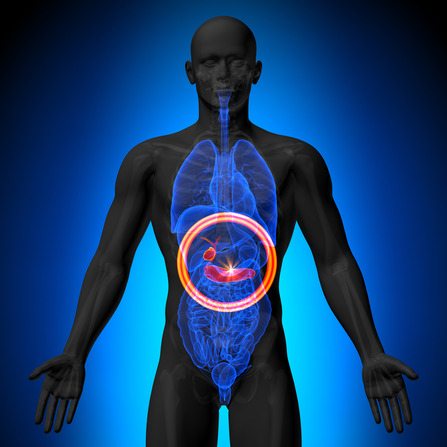 Where is the Gallbladder Located?
Where is the Gallbladder Located?
The gallbladder is located in a small indention underneath the liver.
Common Gallbladder Problems
The gallbladder can be affected by several potential health conditions. Anything which blocks the normal flow of bile into and out of the gallbladder can lead to health issues.
- Polyps
- Infection
- Tumors
- Cholecystitis (inflammation of the gallbladder)
- Gallbladder cancer
- Gallbladder is not working properly
- Gallbladder has stopped working
- Gallstones which cause symptoms
Not all gallstones cause symptoms. You could have gallstone and not even know it! 'Silent' gallstones, meaning that the stones do not cause symptoms, may be present for years and discovered during an imaging test for another condition. As long as silent gallstones do not cause symptoms, the gallbladder does not need to be removed. Most of the time, the gallbladder is removed when a problem occurs – especially in the case of gallstones. Once you have gallstones, they are likely to recur if the gallbladder is not removed. You can live a normal lifestyle without a gallbladder, since bile has other paths to reach the small intestine.
Can You Avoid Gallstone With Diet?
 Gallstones usually occur when the substances which make up bile are out of balance. Too much bilirubin or cholesterol can cause gallstones to form. Insufficient bile salts can also lead to gallstone formation. There is no surefire way to avoid gallstones. However, you can help reduce your risk with your diet.
Gallstones usually occur when the substances which make up bile are out of balance. Too much bilirubin or cholesterol can cause gallstones to form. Insufficient bile salts can also lead to gallstone formation. There is no surefire way to avoid gallstones. However, you can help reduce your risk with your diet.
- Choose low fat or nonfat foods
- Choose diets high in fiber and whole grains
- Be sure to include plenty of fruits and vegetables in your diet
- Avoid foods high in cholesterol
- Avoid fatty meats, and opt for lean cuts and fish
- Don't skip meals, if possible
Keeping active and maintaining a healthy weight are other ways to reduce your risk of developing gallstones. Exercise is a natural way to reduce cholesterol. Even better, exercise is great for your overall well-being!
Who is at Risk for Gallstones?
Some people are at a higher risk of gallstones than others. It's especially important for people who have inherent risk factors to practice healthy eating and lifestyle habits. People at risk for gallstones include:
- Women
- Pregnant women
- Being Native American
- Having a family history of gallstones
- Having diabetes
- People over age 60
- Being obese or overweight
- Eating a high fat and/or high cholesterol diet
- Eating a low-fiber diet
- Losing weight at a rapid rate
- People on certain medications, including some cholesterol-lowering medications and some hormone therapy drugs
Having any one of these risk factors increases your chance of developing gallstones. Being proactive about the risk factors which you can control will help reduce your chance.
Why Does My Gallbladder Need to be Removed?
When your gallbladder is causing uncomfortable symptoms and side effects, there's a good chance that you will need to have your gallbladder removed.
Gallbladder removal surgery, also known as a cholecystectomy, is a fairly common procedure. There are several potential reasons why your gallbladder may need to be removed.
Why Does My Gallbladder Need to be Removed?
When functioning normally, the gallbladder controls the distribution of bile, a fluid which helps the digestive system process fats. Bile is stored in the gallbladder when the body is not actively digesting, such as between meals or overnight, and released into the small intestine during mealtimes.
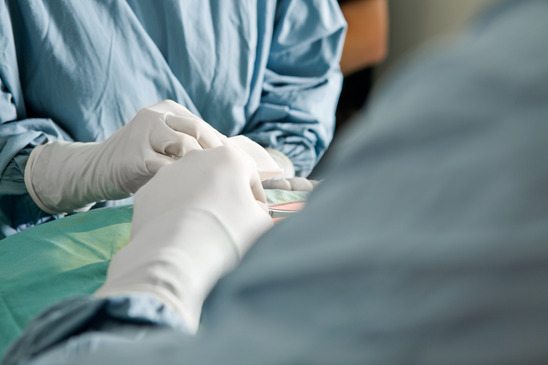 There are several conditions which can interrupt the normal flow of bile. When bile can't flow normally, a person may feel symptoms such as pain, discomfort, nausea, and more.
There are several conditions which can interrupt the normal flow of bile. When bile can't flow normally, a person may feel symptoms such as pain, discomfort, nausea, and more.
Common reasons to have your gallbladder removed:
- Extreme inflammation (cholecystitis)
- Infection
- Tumors
- Gallbladder cancer
- Gallbladder is not working properly
- Gallbladder has stopped working
- Gallstones which cause symptoms
Some people may have gallstones that do not cause symptoms. These gallstones are often found during other medical tests and procedures. Since 'silent' gallstones are asymptomatic, they do not generally need to be removed unless they start causing symptoms.
Common Types of Gallbladder Removal Surgery
The type of gallbladder removal surgery you receive will depend on the source of the problem, the size of any gallstones, and how the gallbladder can safely be removed.
Open cholecystectomy: Also known as 'traditional' or 'conventional' gallbladder removal surgery.
- A long incision is made in the patient's abdomen. The gallbladder is separated, sutures applied to cystic ducts and arteries, and the gallbladder removed.
- Patients can expect to stay in the hospital for up to a week after the operation.
- The average recovery time to return to normal work and activities is usually four to six weeks.
Laparoscopic cholecystectomy: Sometimes called 'keyhole' surgery due to the small incisions and use of a tiny video camera during the procedure.
- Several small incisions are made in the patient's abdomen. As with open cholecystectomy, the gallbladder is separated, sutures applied, and the gallbladder removed.
- If for any reason the gallbladder is determined unsafe to remove by way of laparoscopic cholecystectomy, your surgeon will switch to open cholecystectomy.
- Since this procedure is less invasive, patients can usually leave the hospital within 24 hours of surgery.
- The average recovery time to return to normal work and activities is usually two weeks.
For both open and laparoscopic cholecystectomy, your surgeon will want to verify that there are no gallstones in the bile duct by taking an X-ray of the area. If any gallstones are found, they will be removed during surgery.
Non-surgical treatment: Some people are unable to have surgery due to pre-existing medical conditions or prior surgery in the upper abdomen. In these cases, non-surgical treatments may be an option.
- Medication may be prescribed to dissolve cholesterol-based gallstones. However, it may take months or years for the gallstones to completely dissolve, and the stones may return at a later date.
- Shock wave dissolution, also known as lithotripsy, is a procedure which uses a focused sound wave to break cholesterol gallstones into small pieces. The pieces are then carried naturally out of the gallbladder and into the digestive system.
What Happens if My Gallbladder is Not Removed?
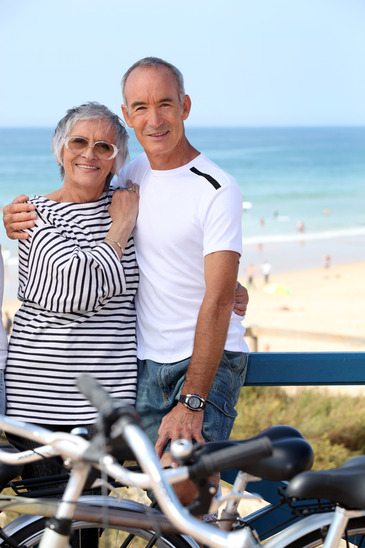 Anesthesia is a frightening concept for many people, leading some to postpone or avoid gallbladder removal surgery. Untreated, your gallbladder can result in several complications.
Anesthesia is a frightening concept for many people, leading some to postpone or avoid gallbladder removal surgery. Untreated, your gallbladder can result in several complications.
- Cholecystitis (gallbladder inflammation) can lead to a ruptured gallbladder.
- Cholangitis (bile duct infection) can be harmful in itself, but can spread to other organs such as the liver.
- Loose gallstones in your system can lead to pancreatitis if they block the bile duct.
- Any of these complications can quickly become dangerous for your health.
Recovery Tips After Gallbladder Removal Surgery
It's normal for you to feel sick, bloated, or tired immediately after your surgery. Caring for your wounds and taking care of your health will speed along your recovery.
- Dress your stitches properly, cleaning the area, replacing dressings regularly, and applying any medication your doctor prescribes.
- Get plenty of sleep!
- Eat small, light meals immediately after the surgery, and build up to normal intake over the next few days.
- Exercise – but choose gentle activities such as walking.
- Do not drink alcohol for at least 24 hours after surgery.
If you experience fever, jaundice, pain, persistent nausea, or a return of your original symptoms, contact your doctor immediately as these could be signs of complications.
Is it Possible to Live Without a Gallbladder?
Surgery and lifestyle changes are two things which often go hand in hand. Surgeries take place for a wide variety of reasons. Beyond the recovery process, the body usually has to adapt to a new equilibrium.
The gallbladder is one organ which is usually removed when something goes awry with how it functions. Is it possible to live without a gallbladder?
Is it Possible to Live Without a Gallbladder?
 It is absolutely possible to live a long and healthy life without a gallbladder. To understand why, you'll need to know a little background about what the gallbladder does.
It is absolutely possible to live a long and healthy life without a gallbladder. To understand why, you'll need to know a little background about what the gallbladder does.
The gallbladder stores a fluid called bile, which is produced by the liver to help break down fats during digestion. When bile cannot be delivered to the small intestine as normal, the gallbladder is most often removed.
Gallstones, which are usually made up of cholesterol or bilirubin, can clog gallbladder ducts and cause pain, nausea, and many other symptoms. Since gallstones often recur after removal, the gallbladder is generally removed. Swollen or infected gallbladders happen for a variety of reasons and are also candidates for removal.
Even though the gallbladder helps digestion, the body has other ways of transporting bile to the small intestine. The main difference is that without a gallbladder, bile is continuously delivered into the small intestine instead of being stored and distributed at intervals.
Types of Gallbladder Removal Surgery
There are several types of gallbladder removal surgery, which is also known as a cholecystectomy.
- Open cholecystectomy: A procedure where an incision is made in the patient's abdomen and the gallbladder is removed. Hospital stays usually average around a week, while recovery is estimated between four to six weeks.
- Laparoscopic cholecystectomy: Multiple incisions are made in the patient's abdomen and a specialized camera is used during the procedure. Hospital stays are usually less than 24 hours, and most patients can return to normal activities within two weeks.
- Non-surgical treatments: Usually used when surgery is not an option for a patient. These patients may have had prior abdominal surgery or other health conditions. Medication can be prescribed to dissolve cholesterol-based gallstones. Lithotripsy, or shock wave dissolution, is another way to dissolve cholesterol-based gallstones.
Open cholecystectomies used to be the most common type of gallbladder removal surgery, but laparoscopic cholecystectomy surgery has now become the standard for most cases.
Activity and Diet Without a Gallbladder
After recovering from surgery, you can return to your normal activities without needing to alter or reduce the  intensity of your work, workouts, or hobbies.
intensity of your work, workouts, or hobbies.
The main lifestyle changes you'll expect following gallbladder removal surgery center around your diet. Your gallbladder was in charge delivering bile to your small intestine during mealtimes and storing bile when not needed, such as overnight.
Without a gallbladder, bile is constantly delivered to your small intestine. This means that you may experience some changes in your digestion. For most people, these side effects go away over time.
You may experience:
- Flatulence
- Diarrhea
- Indigestion
Your body will also digest food differently now that the flow of bile has changed. Fatty foods, full fat milk and dairy, and spicy foods may cause indigestion in some people. A balanced diet which is high and fiber and low in fat is a good place to start as you determine the right diet for you.
Dietary recommendations to help manage your digestion:
- Avoid fatty or fried foods
- Reduce or cut out spicy foods
- Choose high fiber foods and whole grains
- Choose plenty of vegetables
- Opt for low fat or non-fat dairy
- Reduce your caffeine intake if it causes indigestion
- Avoid eating a large meal after fasting
- Eat smaller meals throughout the day
You can live a healthy lifestyle without your gallbladder. Finding the right diet for your digestive system may take some time. Stay positive, experiment with different combinations of food and drink, and always consult your doctor with any questions or concerns you may have.
If you experience persistent symptoms, develop jaundice, become weak, or notice significant weight loss after surgery, you will want to speak to your doctor.
What is Laparoscopic Gallbladder Removal Surgery?
The gallbladder is a small, pear-shaped organ which stores and releases bile, which is helpful in digesting fats. Sometimes, whether as a result of infection, gallstones, or other issues, the gallbladder needs to be removed. One type of gallbladder removal surgery – laparoscopic cholecystectomy (LC) – is one option to remove a problematic gallbladder.
What is Laparoscopic Gallbladder Removal Surgery?
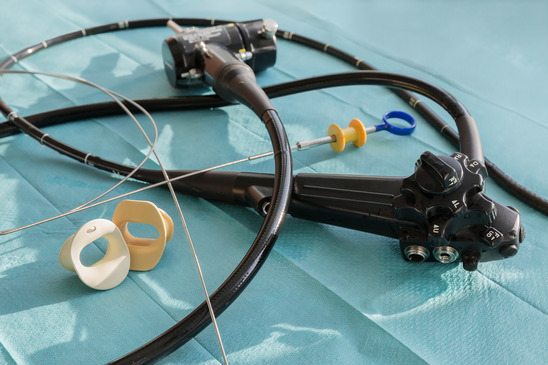 There are two main types of gallbladder removal surgery, open and laparoscopic cholecystectomy.
There are two main types of gallbladder removal surgery, open and laparoscopic cholecystectomy.
- Open cholecystectomy: Also known as 'traditional' cholecystectomy. A single abdominal incision is made to allow the surgeon to remove the gallbladder.
- Laparoscopic cholecystectomy: Several small incisions and a specialized scope called a laparoscope (a tiny video camera) are used to remove the gallbladder.
Laparoscopic gallbladder removal surgery is far less invasive than open cholecystectomy.
What is the Procedure for Laparoscopic Cholecystectomy?
Prior to the surgery, the patient is put under general anesthesia and remains asleep throughout the procedure.
- Surgeons make several small incisions in the abdomen and pass surgical instruments and the laparoscope (a video camera with a light attached) through the incisions.
- The surgeon locates the gallbladder. If the gallbladder is too complicated to remove with LC, they will switch to an open cholecystectomy and a larger incision will be made to allow access to the gallbladder.
- If the gallbladder is safe to remove with LC, the surgeon closes off the attached vessels and tubes and removes the gallbladder from the body.
- The incisions are then closed.
Your surgeon may perform a cholangiogram during LC to see if there are any gallstones in the bile duct. A cholangiogram is a test which identifies any gallstones which are located in the tubes and ducts outside of the gallbladder. A dye is injected into the bile duct to illuminate any stones. Then, an X-ray is taken. If any gallstones are located, they will be removed.
Can All Patients Receive a Laparoscopic Cholecystectomy?
Laparoscopic cholecystectomy is not an option for everyone. People who have previous upper abdominal surgery or certain pre-existing health conditions may need an alternate treatment method.
LC is also not viable if the gallbladder is infected, extremely inflamed, or if the gallstones are very large.
Benefits of Laparoscopic Gallbladder Removal
LC surgery is a safe and effective way to remove a problematic gallbladder. After LC surgery, you can usually 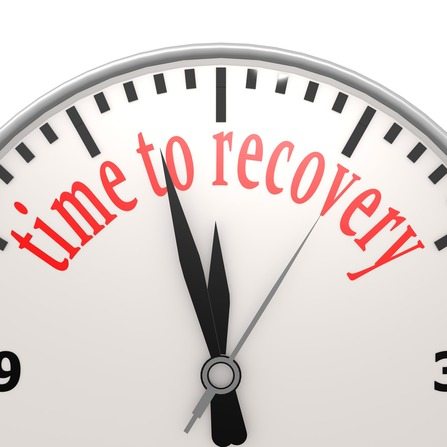 resume your normal activities after one or two weeks, depending on how quickly you recover.
resume your normal activities after one or two weeks, depending on how quickly you recover.
Benefits of LC Surgery Include:
- Shorter recovery time
- Shorter hospital stay (usually less than 24 hours)
- Less postoperative pain
- Less scarring
- Fewer complications
Open cholecystectomy is a more invasive procedure than LC, and requires more recovery time and a longer hospital stay.
Living Without a Gallbladder
Living without a gallbladder is rarely different than your normal lifestyle. After recovery, you can still be as active as you were prior to your surgery.
Most of your lifestyle changes will be diet-related. Since the gallbladder stores bile and helps digest fats, you may need to cut down on fatty food. You may also need to choose low-fat dairy, high fiber options, and limit foods which trigger side effects. Eating smaller meals throughout the day can also be beneficial to limiting or avoiding side effects.
Side Effects Include:
- Flatulence
- Indigestion
- Diarrhea
You generally want to aim for a balanced, healthy diet following any type of gallbladder removal surgery.
Symptoms of Gallstones
You may have gallstones and not even know it! These 'silent' gallstones may be with you for years, yet never cause symptoms.
People generally have their gallbladders removed when their gallstones cause symptoms. While it's possible to remove just the gallstone, gallstones are likely to recur and cause further symptoms. Gallbladders which are not working properly may also need to be removed.
Symptoms of Gallstones:
- Pain in the right shoulder
- Pain in the central abdomen or upper right portion of the abdomen lasting at least 30 minutes
- Pain between the shoulder blades
- Jaundice
- Fever
- Clay-colored stools
Everyone's pain tolerance is different, and some people prefer to wait and see if the gallstones go away on their own. However, keep an eye out for the development of emergency symptoms. These symptoms require immediate medical attention.
Emergency Symptoms of Gallstones:
- Pain which prevents you from finding a comfortable resting position
- High fever and chills
- Jaundice
If you experience any of these emergency symptoms, it's important to seek medical attention as soon as you can.
What are the lifestyle changes after Gallbladder Removal?
Gallbladder removal usually occurs when a patient has gallstones that cause pain, jaundice, and nausea among other symptoms.
The gallbladder is not an essential organ, and people who have their gallbladders removed can live happy, normal lives. Lifestyle changes after gallbladder removal are mostly diet-centric and should not affect any exercise routines you may have.
Lifestyle Changes After Gallbladder Removal
The gallbladder's purpose is to store and release a fluid called bile. The body produces bile naturally to help digest  fatty foods. Bile is released during mealtimes and stored when the body is not actively digesting food, such as while you are asleep.
fatty foods. Bile is released during mealtimes and stored when the body is not actively digesting food, such as while you are asleep.
People can live without the gallbladder because this organ is not essential to digestion. The body has other ways of delivering bile to the small intestine.
Most people will experience some digestive side effects after surgery, but these symptoms usually go away on their own within a few weeks.
Digestion changes you may experience:
- Flatulence
- Diarrhea
- Indigestion
Everyone's system processes food in a slightly different way, so there is not a set diet. However, there are some recommended guidelines to help you adjust your eating habits.
Diet changes to help you manage living without a gallbladder:
- Eat smaller meals spread throughout the day.
-
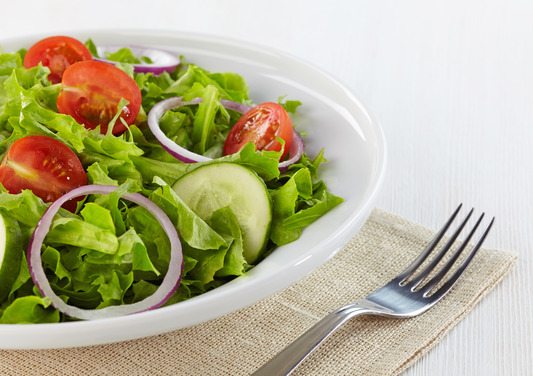 Avoid eating a large meal after fasting.
Avoid eating a large meal after fasting. - Reduce or cut out foods which make side effects worse, especially fatty and fried foods, as well as gravies.
- Choose a diet high in fiber and low in fat.
- When eating meat, choose leaner cuts and fish.
- Choose non-fat or low-fat dairy.
- Caffeinated beverages such as soda and tea can be difficult for some people to digest. Cut back your normal amount and slowly reintroduce caffeine to your system.
When choosing your new diet, aim to find a balanced diet which fits your needs and does not cause you discomfort. Finding the right changes for your lifestyle may take some experimentation. Consult your doctor with any questions or concerns.
If you start to lose weight, become weak, or if symptoms persist or worsen, speak to your doctor.
Can Gallstones lead to Gallbladder Cancer?
The gallbladder produces a substance called bile which helps our small intestine break down fats in the foods we eat. Sometimes, gallstones develop in the gallbladder and prevent the normal flow of bile. Gallstones can cause blockages in the gallbladder, causing pain, discomfort, and complications such as cholecystitis. But can gallstones lead to gallbladder cancer?
Can Gallstones lead to Gallbladder Cancer?
According to the American Cancer Society, gallbladder cancer is estimated to affect approximately 11,000 people in the United States this year. Gallbladder cancer is a rare condition which can either start in the gallbladder or start in another area of the body and spread to the organ.
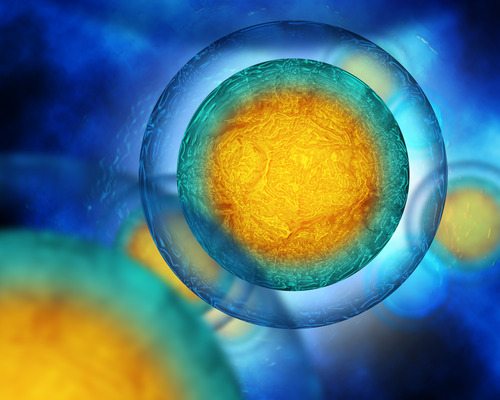 It is uncommon for people who develop gallbladder cancer to have gallstones. Gallbladder cancer occurs when malignant cells develop in the tissue or membrane of the gallbladder, while gallstones affect the normal flow of bile into and out of the gallbladder.
It is uncommon for people who develop gallbladder cancer to have gallstones. Gallbladder cancer occurs when malignant cells develop in the tissue or membrane of the gallbladder, while gallstones affect the normal flow of bile into and out of the gallbladder.
Gallbladder cancer can be hard to detect, as there are generally no signs or symptoms in the early stages. Symptoms can also mimic other diseases, leading to a delayed diagnosis. The gallbladder is located behind the liver, which can further make detection difficult.
When gallbladder cancer is detected, it is often in a later stage of progression. The early stages are limited to the gallbladder itself, and are easier to treat. Later stages can spread to surrounding muscles, organs, and tissue, and are more difficult to treat.
Gallstone vs Gallbladder Cancer Symptoms
The symptoms of gallstones and gallbladder symptoms are similar in some respects, but should not be confused for one another.
Gallbladder cancer can be hard to detect, and is often caught in later stages or while seeking treatment for another health issue.
Symptoms of gallbladder cancer include:
- Fever
- Nausea and vomiting
- Bloating
- Lumps in the abdomen
- Pain above the stomach
- Jaundice
Some people may have gallstones and not even know it! Asymptomatic gallstones are often called 'silent' gallstones.
For other people, symptoms of gallstones – also known as 'gallbladder attacks' – occur during or after mealtimes. The gallbladder tries to release bile into the digestive tract to help break down fats, but the bile is blocked by a gallstone. Gallbladder attacks may last for one or several hours, and stop when the gallstone moves.
Symptoms of gallstones include:
- Pain in the right shoulder
- Pain in the central abdomen or upper right portion of the abdomen lasting at least 30 minutes
- Pain between the shoulder blades
- Jaundice
- Fever
- Clay-colored stools
Speak to your healthcare provider if you experience the symptoms of gallstones or gallbladder cancer. The sooner 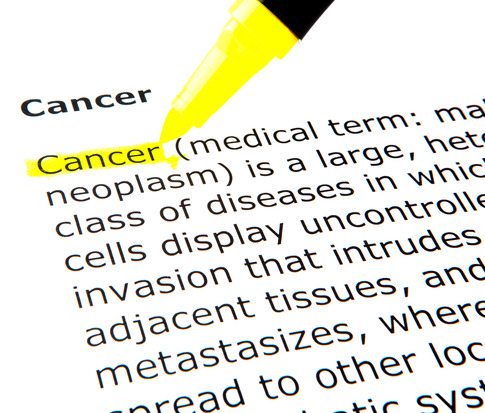 you seek treatment, the more likely you are to catch a problem before it gets worse!
you seek treatment, the more likely you are to catch a problem before it gets worse!
Treatment for Gallbladder Cancer
The type of treatment for gallbladder cancer will depend on the patient's age and health, symptoms, and progression of the cancer.
The most common types of treatment are:
- Surgery: The gallbladder, tumor, and surrounding tissue may be removed to stop the spread of cancerous cells.
- Chemotherapy: Medication is administered by IV or capsule in a set regimen to destroy the cancerous cells, stop their growth and division, and prevent further spread.
- Radiation Therapy: X-rays are used over a series of sessions to destroy cancerous cells. This method is often used to shrink tumors prior to surgery, or afterwards to get rid of any remaining cancerous cells.
What is Gallbladder Disease?
The term gallbladder disease refers to conditions which affect the gallbladder. The two most common conditions are:
- Gallstones
- Cholecystitis (inflammation of the gallbladder)
- Infection
What are Gallbladder Polyps?
Polyps are growths or lesions which protrude from the wall of an organ. They can occur in many areas within the body, including the gallbladder. When a person has gallbladder polyps, the polyp grows from the gallbladder wall into the interior of the gallbladder.
Most of the time, polyps are benign, meaning they are non-cancerous. Malignant polyps are cancerous and require treatment so they do not spread to other organs.
The type of treatment for malignant gallbladder polyps will depend on the size and location of the polyp. Your doctor will be able to make the best assessment of your specific case.
Our Gastroenterology Department
Florida Medical Clinic
In addition to providing general consultation, the Florida Medical Clinic Gastroenterology Department may schedule appointments for patients with diseases or disorders of the pancreas, liver, gallbladder, esophagus, stomach, small intestine and colon. Learn more about our Gastroenterology physicians and providers.
At Florida Medical Clinic, we have a team of nearly 300 providers with extensive training in fields such as anesthesiology, cardiology, endocrinology, plastic surgery, gastroenterology, hematology/medical oncology, hospital medicine, pain management, nephrology, obstetrics and gynecology, ophthalmology, orthopaedic surgery, pathology, podiatry, radiology, and urology. From common ailments like allergies and asthma to more complex conditions such as heart failure and cancer, there are no issues that Florida Medical Clinic can't handle with compassion and expertise.
Our incredible physicians and advanced medical providers impact the lives of patients like you each and every day, going above and beyond to address virtually any need that might arise. To request an appointment at Florida Medical Clinic, please complete our online form and our office will contact you within one business day to schedule your appointment.
Department Page
Can Diet Soda Destroy Your Gallbladder
Source: https://www.floridamedicalclinic.com/blog/recognizing-the-symptoms-of-a-gallbladder-attack/
0 Response to "Can Diet Soda Destroy Your Gallbladder"
Post a Comment